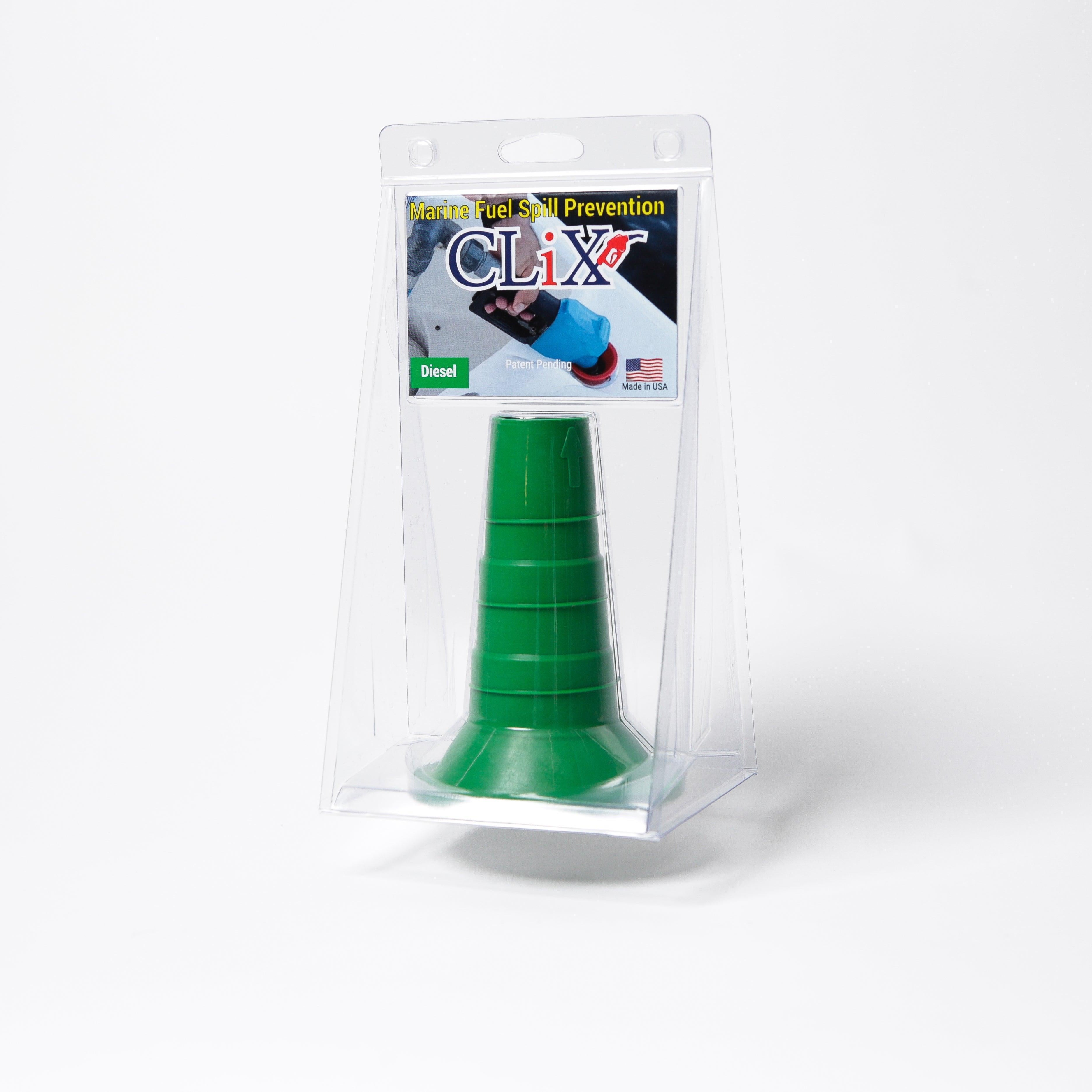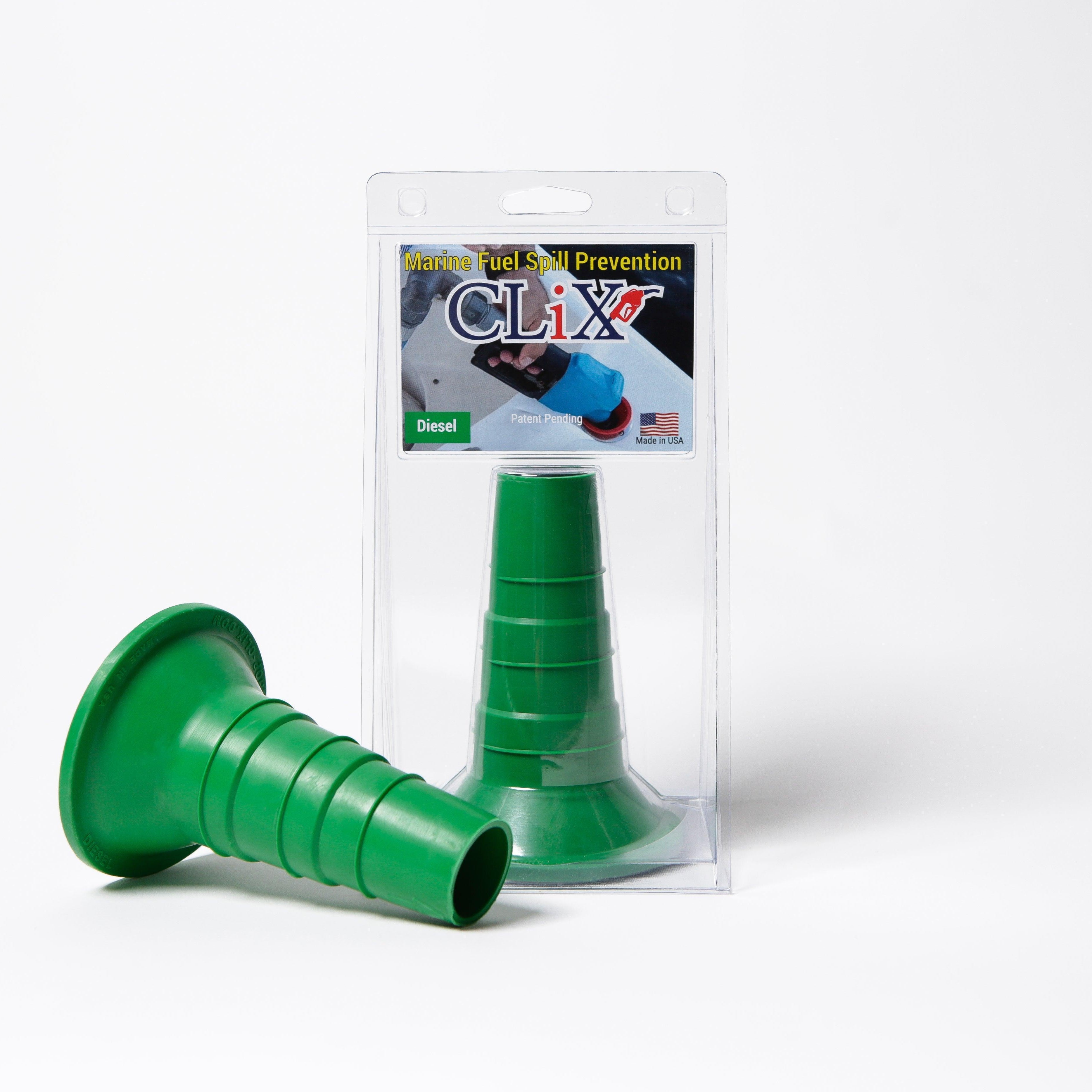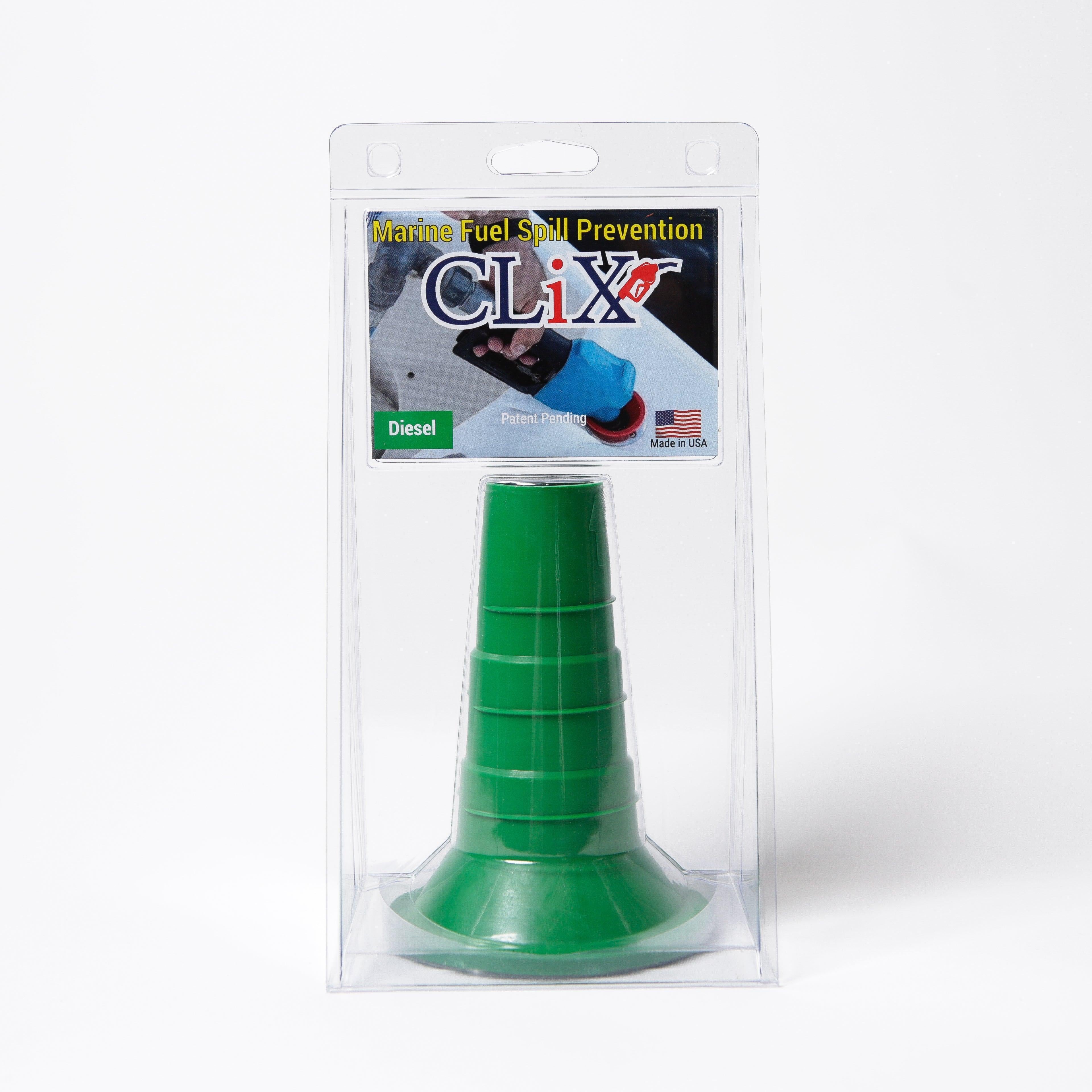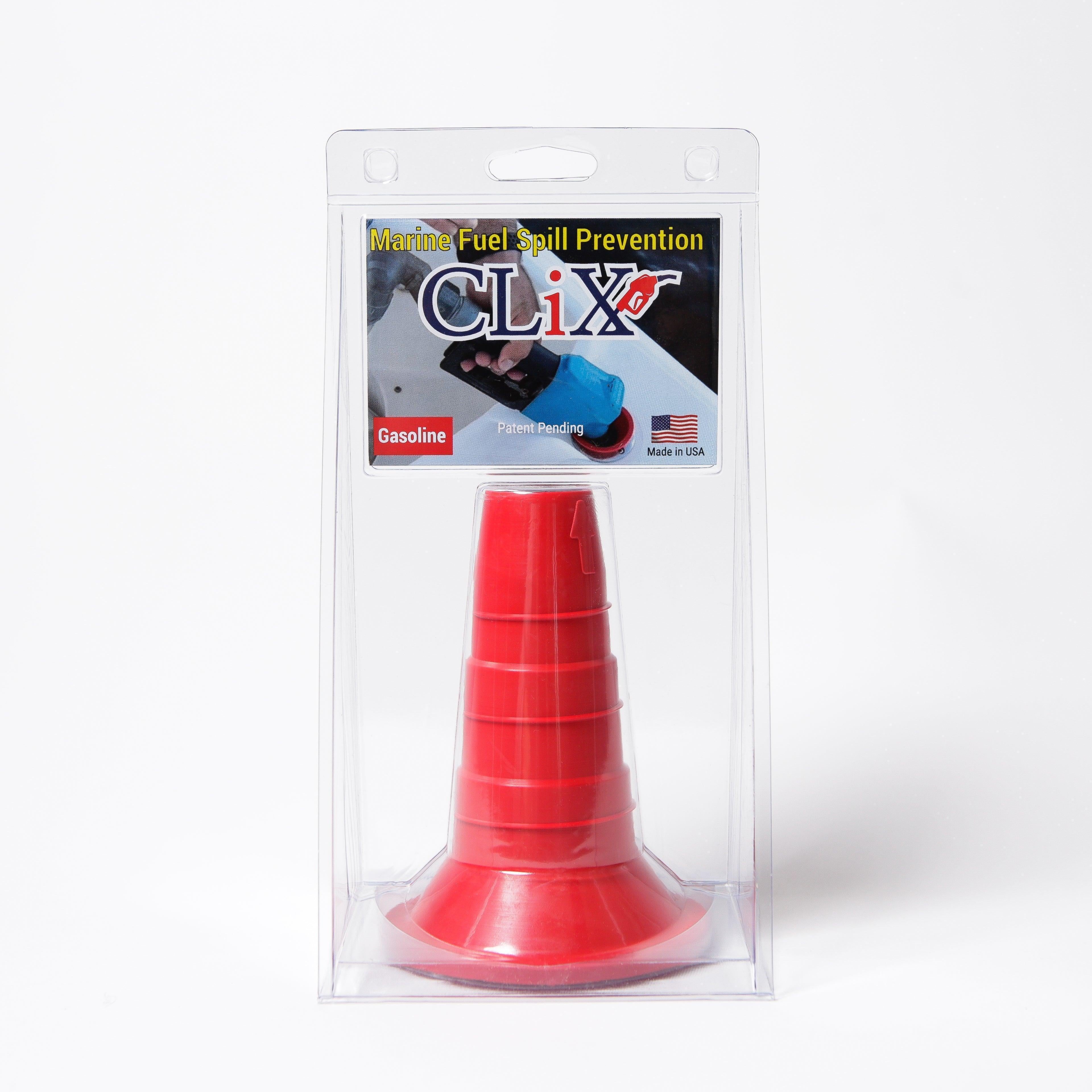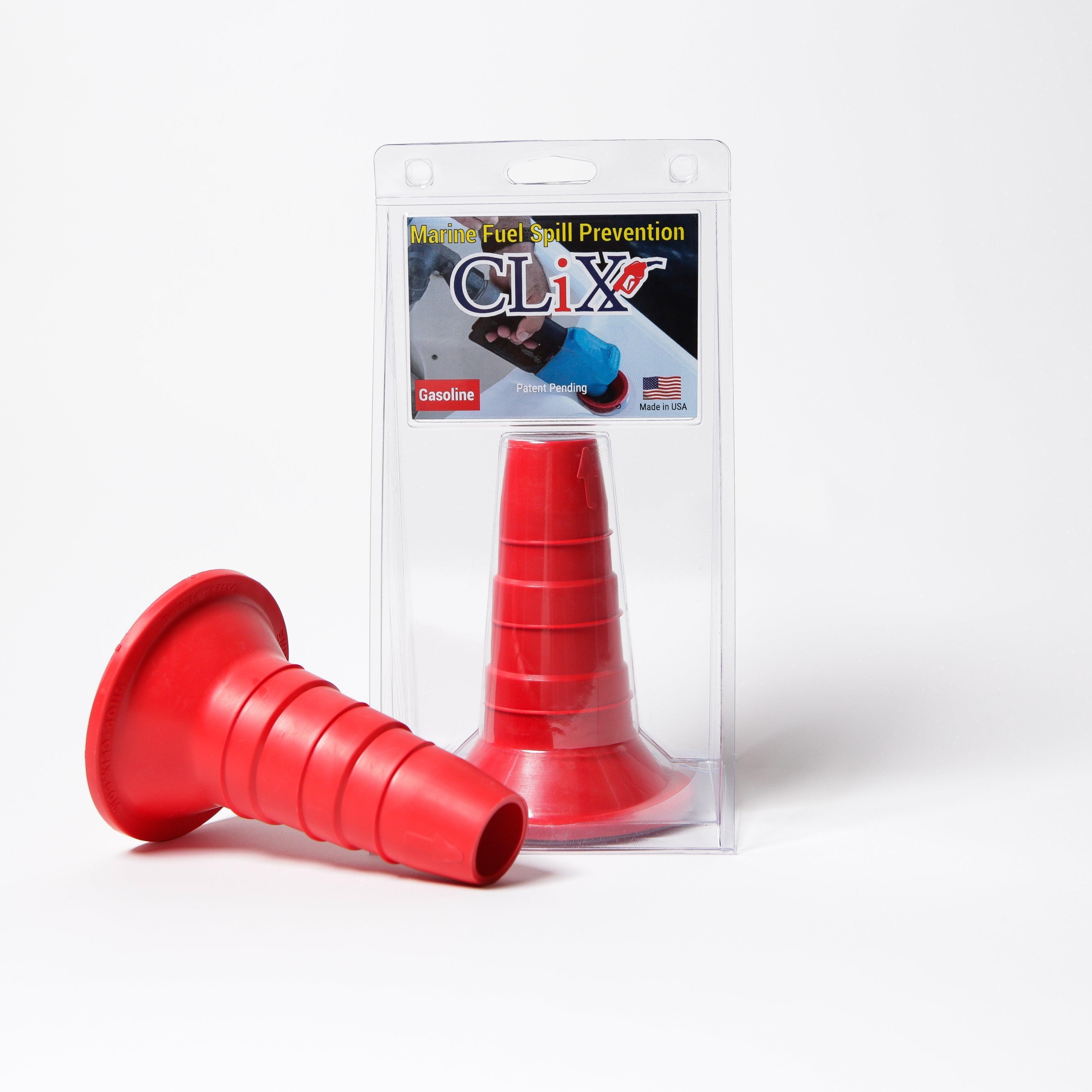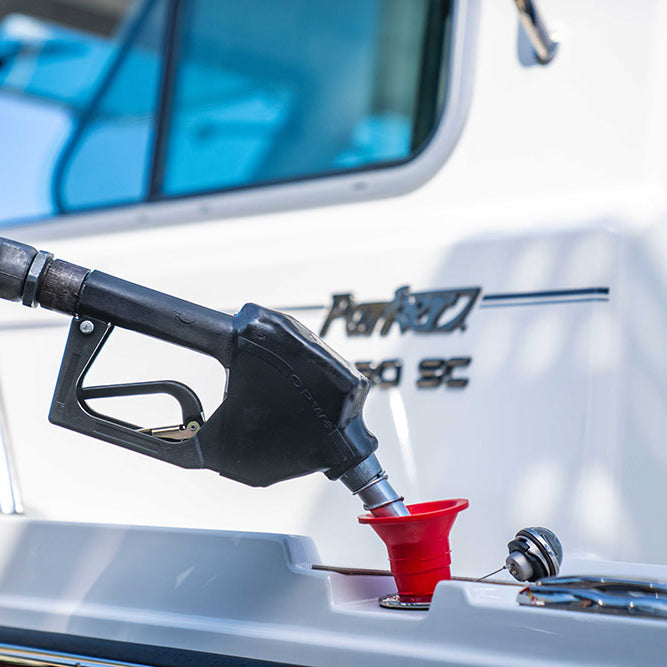A 10-gallon gas can really hits the sweet spot between having plenty of fuel on hand and still being able to carry the thing around. It’s the perfect size for powering a generator through a storm, keeping big lawn equipment running, or just having a reliable backup for your car. You get enough fuel to be useful without needing to make constant trips for refills, but it's not so large and heavy that it becomes a chore to manage.
Why Choose a 10 Gallon Gas Can
When it comes to fuel storage, the 10-gallon size is a popular go-to for a reason. Think of it as the happy medium—it offers a serious amount of fuel without being ridiculously heavy or awkward. It's like the perfect travel companion for a long road trip; big enough to get you through the empty stretches but not so bulky it hogs all your cargo space. That’s what makes it so practical for just about anyone.
For those working in more demanding environments, understanding the needs of different automotive workshop settings can really put the value of a good, reliable gas can into perspective.

Common Uses and Practical Benefits
This isn't a one-trick pony. The 10-gallon can is a dependable workhorse for all sorts of situations. Its usefulness is even reflected in the market; the demand for jerry cans of all sizes, especially in industrial and petroleum fields, is on the rise. This just goes to show how essential these containers are for both pros and homeowners alike.
The real-world benefits are easy to see:
- Emergency Preparedness: A full can holds enough fuel to run a generator for a good while during a power outage or get you to the next town if your car runs dry.
- Fueling Large Equipment: It’s ideal for thirsty machines like ride-on mowers, small tractors, or boats that burn through fuel quickly.
- Job Site Efficiency: For contractors or landscapers, fewer trips to the pump means more time on the job. That saves both time and money.
- Recreational Adventures: A 10-gallon can is a must-have for long ATV trips, boating weekends, or RV journeys, giving you peace of mind when you’re far from the nearest gas station.
Materials Matter: Durability and Design
What your gas can is made of has a huge impact on how well it works and how long it lasts. You've basically got two main choices: high-density polyethylene (HDPE) plastic or classic metal, which is usually steel. Plastic cans are a fantastic option for most people because they’re lightweight, they won't rust, and they're easier on the wallet.
A well-chosen gas can is more than just a container; it’s an investment in convenience and safety. The right material ensures your fuel is stored securely, whether it’s for a weekend project or an emergency.
Metal cans, on the other hand, are the tough guys. They offer top-notch durability and are much harder to puncture, making them a favorite in rough-and-tumble professional environments where they might get banged around. Knowing the difference between these materials is the first step to picking a can that’s truly right for you.
Decoding Gas Can Safety Features
When you're dealing with fuel, there’s no room for error. A modern 10 gallon gas can is built from the ground up with your safety in mind. It's easy to see the extra features on new cans as a hassle, but they’re actually a sophisticated safety net, designed to prevent spills, fires, and other accidents.
These aren't just random additions. They're the product of tough regulations and smart engineering. The global market for fuel containers is expected to hit USD 47.3 billion by 2035, and a huge part of that growth comes from these new safety and environmental standards. Innovation follows regulation, leading to better, safer cans for all of us.

Core Safety Components Explained
To really get why your new gas can works the way it does, it helps to understand the tech keeping you safe. Each part has a specific job, whether it's stopping spills, trapping fumes, or even preventing explosions.
Here are the key features you’ll find on any compliant can today:
- Flame Arrestor: This is a small metal mesh screen, usually just inside the spout. It lets fuel flow out but stops an external flame or spark from traveling back into the can and igniting the vapors inside. It’s a simple but brilliant piece of fire prevention.
- Self-Venting Spout: As temperatures rise and fall, gasoline expands and contracts, creating pressure inside the can. A self-venting spout automatically releases this vapor pressure in a controlled way, so the can doesn’t swell up, leak, or burst.
- Automatic Shut-Off Nozzle: This mechanism ensures that fuel only flows when you're actively pressing the nozzle. The second you let go, it stops. This prevents those messy, dangerous overfills and spills that used to be so common.
These components work in tandem to keep the fuel contained. This is a core principle in handling any hazardous material; for a wider perspective, it's worth getting familiar with mastering workplace safety procedures, which are built on the same ideas of control and prevention.
Essential Safety Features on Modern Gas Cans
To make it even clearer, let's break down how these crucial safety components function in the real world and why they are so important. Each one is a small piece of engineering that makes a big difference.
| Safety Feature | What It Does | Why It Matters |
|---|---|---|
| Flame Arrestor | A metal screen in the spout that prevents external flames from igniting fuel vapors inside the can. | It's your first line of defense against a flashback explosion, a critical safeguard when working around potential ignition sources. |
| Self-Venting Spout | Automatically releases built-up vapor pressure caused by temperature changes. | Prevents the can from swelling, distorting, or bursting, which could lead to a large, dangerous fuel spill. |
| Automatic Shut-Off | The spout stops the fuel flow instantly when pressure is released from the button or lever. | This simple feature is incredibly effective at preventing overfills and accidental spills during refueling. |
Together, these features create a closed-loop system that dramatically reduces the risks associated with handling and storing gasoline.
Understanding EPA and CARB Compliance
You’ve probably seen "EPA and CARB Compliant" on a gas can's label. These aren't just marketing buzzwords. They are seals of approval from two major regulatory bodies: the Environmental Protection Agency (EPA) and the California Air Resources Board (CARB).
Compliance means the gas can has passed strict tests for preventing spills and reducing the release of harmful gasoline fumes into the atmosphere. It’s your guarantee that the can is safer for you and for the environment.
A compliant 10 gallon gas can is designed to be tough and leak-proof, keeping both the liquid and its vapors locked down tight. This is vital whether you're transporting fuel or storing it for a while. To make sure you’re using it correctly, check out our guide on how to store gasoline safely for more essential tips.
Ultimately, choosing a compliant can means you're choosing a product that was engineered for safety from the very beginning.
Choosing Your Can: Metal vs. Plastic
When you're picking out a 10-gallon gas can, one of the first big decisions you'll face is the material. It really boils down to a classic matchup: rugged, old-school metal versus modern, lightweight plastic. There’s no single "best" answer—the right choice completely depends on where and how you’ll be using it.
Think about it like choosing a toolbox. A heavy-duty steel one can take a beating on a construction site, but you wouldn't want to lug it around for simple jobs at home. A plastic toolbox is way lighter and more convenient for most people, but it might crack if you drop it off a ladder. Gas cans work on the same principle.
The Case for Rugged Metal Cans
For a long time, metal—usually steel—was the only game in town for fuel storage, and for good reason: it’s incredibly tough. A steel can offers unmatched durability and puncture resistance, which is why you still see them on farms, construction sites, and strapped to the back of off-road rigs. These are places where a can is likely to get knocked around.
Here’s why people stick with metal:
- Extreme Toughness: They can handle being dropped, bumped, and even crushed far better than plastic.
- Longevity: If you take care of it, a good metal can could easily last you for decades.
- Heat Resistance: Metal won’t swell or warp nearly as much when left in the hot sun.
But that strength comes at a price. Metal cans are heavy, and once you fill one with 10 gallons of fuel, it becomes a serious workout to lift and pour. They can also rust if the inner coating gets scratched, and they generally cost more upfront.
The Appeal of Modern Plastic Cans
These days, most of the gas cans you see are made from a tough plastic called high-density polyethylene (HDPE). They've become so popular because they just make sense for the average person who needs to fuel up a lawnmower, a generator, or a boat.
For many, the lightweight and rust-proof nature of a plastic can makes it the clear winner for everyday use, from fueling a lawnmower to keeping a boat topped off.
Plastic cans are completely immune to rust and corrosion, which is a huge plus, especially if you're storing them in a damp shed or using them in a marine environment. They are also significantly lighter, making a full can much easier to handle. If you're a boater, you know how important the right fuel container is; you can read more about choosing portable gas containers for boats to understand why material selection is so critical on the water.
While they aren't quite as indestructible as steel, a well-made HDPE can is more than tough enough for regular use. When you factor in the lower cost, lighter weight, and zero chance of rust, a plastic 10-gallon gas can is simply the most practical and user-friendly choice for most people.
How to Safely Use Your Gas Can
Handling a 10-gallon gas can might seem a little daunting, but it doesn't have to be. It really just comes down to a few common-sense steps to make sure you're handling fuel safely and confidently every single time. The whole idea is to reduce risk, from stopping static electricity at the pump all the way to getting a clean pour into your mower or generator.
First things first: always put your gas can on the ground before you start pumping. It's a simple step that makes a huge difference. Never, ever fill a can while it's sitting in your truck bed, trunk, or on a trailer floor. Why? Plastic bed liners and carpet can insulate the can, letting static electricity build up. That's a recipe for disaster, as a spark could ignite the gas fumes. Setting the can right on the concrete ground lets any static charge disappear harmlessly.
Filling Up the Right Way
Once you’re at the pump, stick the nozzle all the way into the can's opening. Make sure the metal nozzle stays in contact with the rim of the can the entire time you're filling. This simple contact creates a ground, preventing any dangerous static sparks from forming.
Go slow. Pumping too fast can cause splashing, which you definitely want to avoid. You should also stop pumping when the can is about 95% full. That bit of empty space is crucial because it gives the fuel room to expand when the temperature changes. Without that gap, you risk pressure buildup and leaks. Whatever you do, don't top off the can right to the very brim.
Think of it like pouring a soda. If you pour too fast or fill it to the top, you get a fizzy mess. Leaving a little space in your gas can gives the fuel room to "breathe" without spilling over.
When you're done, screw the cap on good and tight to get a solid seal. And before you load it into your vehicle, give the outside of the can a quick wipe to clean up any stray drops of fuel.
Transport and Storage Best Practices
Getting your fuel from the station to your home safely is just as important as filling it correctly. A full 10-gallon gas can has some real heft to it and can tip over pretty easily if it isn't secured. Always keep it upright in your trunk or truck bed and use straps or bungee cords to stop it from sliding around or falling over while you drive. And a non-negotiable rule: never transport a gas can inside the passenger area of your car.
Once you’re home, it’s all about smart storage.
- Stick to a detached shed or garage: You want to keep it well away from your living space to avoid any fume exposure.
- Keep it far from heat sources: This means no storing it near furnaces, water heaters, or anything else with a pilot light.
- Make sure the area is ventilated: Good airflow is your friend. It helps any potential fuel vapors to dissipate safely.
This simple infographic breaks down the main differences between metal and plastic gas cans.

As you can see, each material brings something different to the table. Knowing the pros and cons can help you pick the right can based on what you value most, whether it's durability, safety features, or something else.
How Fuel Prices Affect Your 10-Gallon Refill
https://www.youtube.com/embed/101oFGOz7ac
Ever feel like the cost to fill your 10-gallon gas can is a total guessing game? One week it’s one price, the next it’s something completely different. You’re not imagining it. The price you pay at the pump is tangled up in a complex web of global events, supply chain hiccups, and even the season.
Think of the global fuel market as a giant, sensitive ecosystem. A major storm hitting a refining hub or geopolitical tensions flaring up halfway across the world can send shockwaves that you feel right at your local gas station. Demand plays a huge part, too—prices almost always creep up in the summer when everyone is hitting the road for vacation.
Strategic Fueling and Price Fluctuations
This is where having a 10-gallon gas can really pays off. It gives you the power to be a savvy buyer. Instead of being at the mercy of a sudden price surge, you can wait for a dip, fill up your can, and build a small reserve.
It’s a simple but effective strategy, especially if you rely on that fuel for your generator, boat, or work equipment. A full 10-gallon gas can acts as a buffer against those unpredictable price hikes, making sure you’re always good to go. The size is just right—big enough to make a real difference but not so massive that the initial fill-up breaks the bank.
Owning a 10-gallon gas can is like having a small personal fuel reserve. It empowers you to buy smart, stocking up when prices are favorable and avoiding the panic-buying that often accompanies market volatility.
These global dynamics have a real impact on stored fuel costs. For example, U.S. propane prices saw a 21% drop over one year, even with some daily increases. According to data on global commodity prices from TradingEconomics.com, these kinds of shifts directly affect how cost-effective it is for everyone—from homeowners to emergency services—to keep fuel on hand.
Keeping an eye on these trends isn't just about saving a few bucks on your commute; it's also key for managing the costs of your hobbies. To see how this plays out in the real world, check out our guide on calculating boat fuel cost. When you start paying attention to the market, your 10-gallon gas can transforms from a simple container into a powerful budget-management tool.
Got Questions About 10 Gallon Gas Cans? We've Got Answers.
When it comes to handling fuel, a lot of questions can pop up. Whether you're a new homeowner trying to keep your mower running or a seasoned pro managing a fleet of equipment, you need clear, no-nonsense answers. That's why we’ve put together this list of the most common questions about using a 10 gallon gas can safely and correctly.
Think of this as your quick-start guide. We'll cover everything from how long your fuel will last to the right way to keep your can clean, so you can feel confident every time you refuel.
How Long Can I Safely Store Gas?
This is probably the number one question we hear, and the answer might surprise you. Left on its own, untreated gasoline starts to go bad in as little as 30 days. Oxidation and evaporation slowly chip away at its ability to combust, leaving you with stale fuel that won't properly power an engine.
The good news? You can easily extend that shelf life. A quality fuel stabilizer works like a preservative, stopping the chemical breakdown and keeping your gas fresh for one to two years. For a large 10 gallon gas can holding your emergency supply, this is an absolute must-do step.
What Is the Best Way to Clean a Gas Can?
Keeping your gas can clean is critical—it ensures the fuel going into your engine is pure and free of gunk. To do it right, first make sure the can is completely empty.
Next, pour in a small amount of clean gasoline, maybe half a cup or so. Swirl it around vigorously to dislodge any debris, then pour the dirty gas into an approved container for proper disposal.
Whatever you do, never use water. Water and gasoline are not friends, and even a little moisture left inside can cause major engine trouble. After the gas rinse, just leave the cap off and let the can air dry in a well-ventilated spot, far from any flames or sparks.
Maintaining a clean gas can is just as important as buying a quality one. Contaminated fuel can clog carburetors and damage sensitive engine components, leading to costly repairs that are easily avoided with a simple cleaning routine.
Are Old Metal Gas Cans Still Safe to Use?
That old metal 10 gallon gas can in the corner of the garage might look tough, but it's probably hiding a few problems. The biggest one is rust. If the can's internal lining starts to fail, rust particles will flake off into your fuel, creating a sludge that will do a number on your engine.
On top of that, older cans just don't have the safety features we rely on today, like flame arrestors or self-venting, spill-proof spouts. A vintage can might have character, but it falls short of modern safety standards. It’s always a smarter, safer bet to invest in a modern, compliant can.
Understanding Different Spout Types
Let's be honest, modern gas can spouts can be a little tricky at first. But they're all designed with one thing in mind: safety. You'll mostly run into two types:
- Press-and-Pour Spouts: These are pretty straightforward. You press a button or lever as you tilt the can, and the fuel flows. The second you let go, it stops. No more accidental spills.
- Twist-and-Lock Nozzles: Some spouts have a collar that you need to twist to unlock before you can pour. It’s a great child-resistant feature that also prevents the spout from opening accidentally.
These newer designs were created to cut down on spills and harmful vapor emissions, making them a huge improvement for our safety and the environment. They take a little practice, but the benefits are well worth it.
Can I Fill Multiple Gas Cans at Once?
This one is a hard no. For safety and legal reasons, you should only fill one can at a time, and it must be placed on the ground. This simple rule prevents a buildup of static electricity, which could create a spark and ignite fuel vapors.
Filling a can that's sitting in the back of your truck—especially on a plastic bed liner—is incredibly dangerous because the liner acts as an insulator, allowing static to build.
No matter how many cans you need to fill, take the extra minute to place each one on the ground individually. It’s one of the easiest and most effective ways to prevent a fire at the pump.
We've covered some of the most common questions people have about their 10 gallon gas cans. To make things even easier, here's a quick-reference table with some more answers you might be looking for.
Frequently Asked Questions
| Question | Answer |
|---|---|
| Is it safe to store a 10 gallon gas can in my garage? | Yes, but only in a well-ventilated area away from ignition sources like water heaters or furnaces. Check local fire codes for specific regulations. |
| Why does my new gas can pour so slowly? | Modern safety spouts are designed to be self-venting, which can slow the flow to prevent "glugging" and spills. It's a safety feature, not a defect. |
| Can I store diesel in a red gasoline can? | No. Fuel cans are color-coded for a reason: red for gasoline, yellow for diesel, and blue for kerosene. Never mix them up. |
| What's the best way to transport a full gas can? | Secure it upright in your vehicle's trunk or truck bed so it cannot tip over. Keep a window cracked for ventilation and never transport it in the passenger cabin. |
Hopefully, this clears up some of the mystery around handling and maintaining your fuel cans!
For boaters who want to take the guesswork and danger out of refueling for good, CLiX Fueling Solutions has a smarter way. See how you can get a perfect, spill-free fill-up every single time by visiting https://clixfueling.com.

